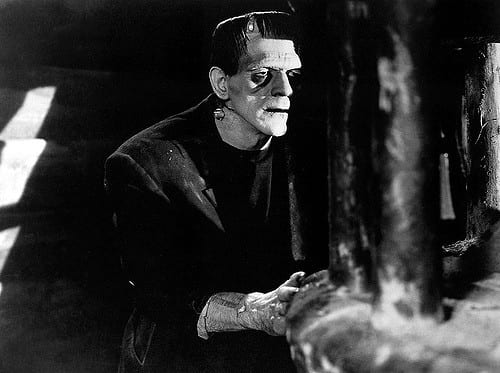
For this fall’s Mellby lecture, which offers St. Olaf professors the opportunity to share their work and scholarship with the public, Diana Postlethwaite spoke about “The Monster’s Plot: Memory, Intelligence, and Time in Mary Shelley’s ‘Frankenstein.’” A professor of English who teaches three courses interwoven with “Frankenstein,” Postlethwaite stated that her intention behind this lecture was to construct yet another critical plot for “Frankenstein” – to consider the novel as a literary genre.
She began by drawing from E.M. Forestors’ “Aspects of the Novel (1927)” to differentiate a plot from a story. A story tells you what happened, a plot makes you ask why.
“A plot asks more of its audience than mere curiosity,” Postlethwaite said, and cited Forestor again. “If we would grasp the plot, we must add intelligence and memory, as unless we remember, we cannot understand.”
This groundwork for what constitutes a plot sets up what follows in the lecture. Postlethwaite dips into the three different “Frankenstein” plots before offering two clips of vastly contrasting film accounts of the iconic ‘creation scene,’ contrasting especially the novel account of the same scene. Offering a summary of events – the story version – tells the audience what happened. Although the novel “Frankenstein” and the film adaptations follow the same events, the source material is unrecognizable in the “mad scientist cliche” movie retellings. As for how plot functions in this novel as a whole, Postlethwaite compares the narrative framework to a Russian nesting doll.
“It begins with a frame story. A polar explorer named Robert Walton’s narration of running into a dying but talkative fellow named Victor Frankenstein. Inside of this is nested another story: Victor’s Tale as he’s telling it to Walton of creating a monster who goes rogue and systematically murders everyone Victor loves,” Postlethwaite said.
But the novel’s biggest narrative surprise, she says, is that Victor’s mad scientist narration ends up being only an introduction to a first person narration told by Frankenstein’s monster.
Postlethwaite compares Victor Frankenstein’s creation and abandonment to that of a father’s. “From his earliest moments of consciousness to the moment when he reunites with the dead beat dad who abandoned him at birth,” Postlethwaite said. “What we have here is a monster who crafts his own creation story. Constructing the plot of his life of memory and intelligence.”
Postlethwaite then segues into a segment of how life imitates art within the creation of “Frankenstein” and Shelley’s own life. In the eight years Mary Shelley was with her hushand Percy Shelley, between the ages of 17-25, there was one premature birth and death, one miscarriage, two children born who died in toddlerhood, two suicides, one child who lived and one death by drowning.
“In her monster’s creation of a meaningful plot for its life story, we can see Mary Shelley wrestling with the demons from her own life of abortive beginnings and senseless endings,” Postlethwaite said.
“We do not remember our birth or our deaths so our lives are bounded on each side by ‘remote or imaginary origins and ends,’” Postlethwaite quoted critic Mark Kermode.
“In the abundant universe of her own imagination, Mary Shelley can create a being who begins his narration by remembering his birth, ends it by imagining his death and fills the space in-between with the coherent plot of a life,” Postlethwaite said.
Postlethwaite then declares that, while the monster’s purpose is to deliver the story of his life to his master thus persuading him to craft him a mate, she believes there is an additional meta-purpose.
“Having been abandoned by his creator, denied an origin story, the self-conscious monster is creating a plot, as of course is his true creator, Mary Shelley,” she said.
“Shelley’s monster is doing what [critics] Forestor and Kermode say is what all novelists and all humans deeply desire to do: use his intelligence to shape memories into a consoling plot,” Postlethwaite said.
The final portion of her presentation focused on time.
“A human life is lived between the tick of birth and tock of death. Tick doesn’t mean anything, tock doesn’t mean anything, but tick tock means something,” she said. Postlethwaite again references Kermode to emphasize the parallels between life and novels.
“This belief that novels have beginnings and endings gives meaningful shape to the plot to the mortal middle. With tick on one side and tock on the other, what comes in-between makes sense,” Postlethwaite said.

